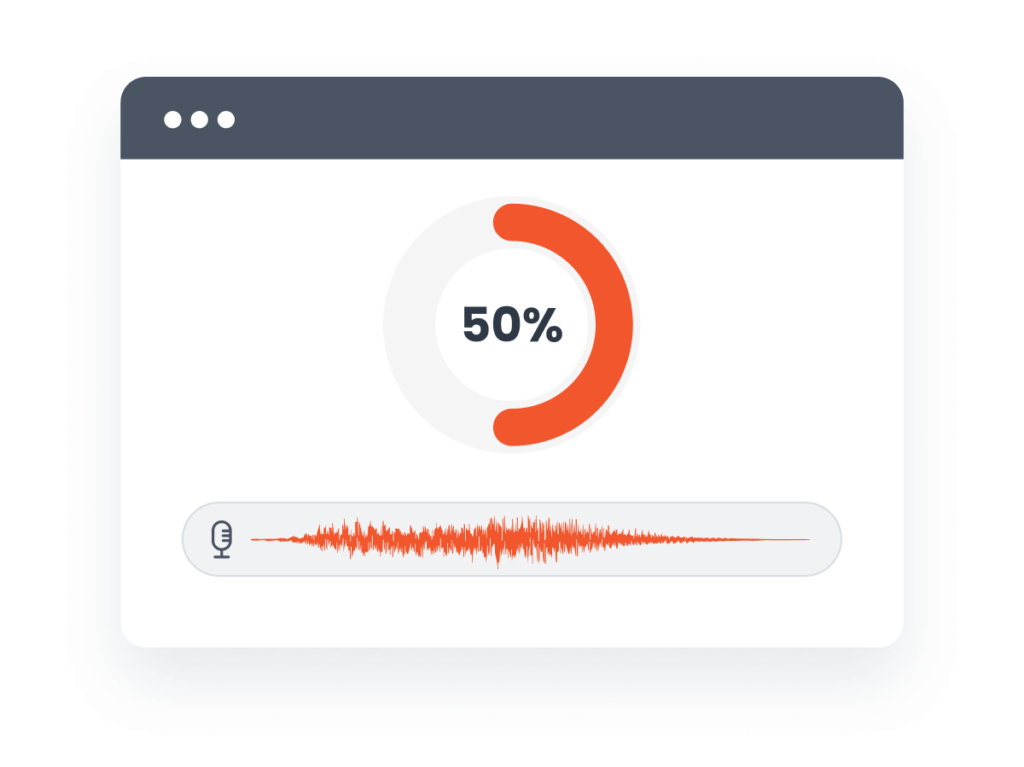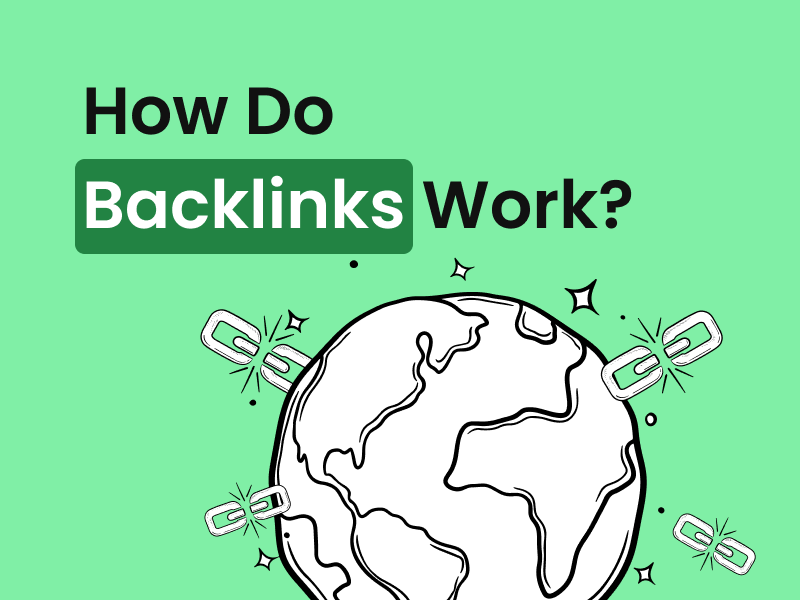How to Optimise for Voice Search: Tips On How To Rank Higher In Google’s Voice Search Results

By Melissa Ng | Last Updated 27 December 2023
Introduction to Voice Search Engine Optimisation and Its Importance
Defining What is Voice Search
Voice search is an emerging technology enabling users to conduct searches or issue commands to smart devices via speech instead of typing. Incorporating not just simple web searches, but also increasingly more complex voice queries using an adaptive algorithm, these devices utilise a synthesis of speech recognition technology and keyword search to deliver a relevant response to users.
Signifying the significance of voice search optimisation in their design, voice search includes activities like requesting Siri for the weather forecast, commanding Alexa to play a favourite song, or asking Google Assistant for the nearest coffee shop – a functionality which saw an increase in “near me” searches. This method, often preferable due to its convenience and intuitive use, is powered by underlying tech including Natural Language Processing (NLP) and Machine Learning.

The Need for Optimising for Voice Search
Optimising content for voice search is important for several reasons. Primarily, the explosive potential for growth in web traffic from voice search is enormous. By incorporating SEO work into your strategy, you may tap into this untapped market, drastically driving more website traffic.
An increasing number of people are tapping into the convenience of voice search, and you don’t want to miss out on the potential clicks coming from this user base because you didn’t employ these essential SEO strategies. Traditional SEO tactics, while crucial, may not fully cater to voice-based queries. Thus, optimising for voice search is not up for debate — it’s a necessity.

Insights into Voice Search Platforms and How They Operate
Tracing the Evolution of Voice Search Platforms
Voice Search has come a long way since its initial inception. The concept wasn’t a commercial reality until Google launched the domain of Google Voice Search (also known as Search by Voice) in 2010. Birthed in Google Labs, the same domain that introduced widely recognised and prevalent products like Gmail, Google Voice Search initially relied on users dialling a unique phone number from their smartphone. A recorded message would then prompt the caller to “Say Your Search Keywords,” and using these, the search would commence.
Over time, the process honed its skills from just decoding commands to aptly replying in a conversational style to complex requests. Now, this function is embedded in not just smartphones, but spans various professional domains like desktop computers, smart TVs, wearables, and other connected devices. Voice Search goes beyond merely reciting search engine results. It can execute tasks, guided by the preference of the user, focusing on context-dependent information and deciphering the user’s intent.
Andrew Ng, a distinguished voice in AI and Baidu’s former chief data scientist, predicted that by 2020, about 50% of all searches will be voice searches [1]. This speculation underscores the rising popularity and practicality of Voice Search and the importance of seamlessly integrating it into any robust digital marketing plan.

Contrasting Voice Search with Text Search
Differences between Voice Search and Text Search are multi-fold, primarily owing to humans’ unique interaction with both interfaces. They do hold common traits such as a keyword search, but their individual usage and patterns remain distinct.
For starters, Voice Search Queries are typically longer and factor in more details compared to text-based searches. People tend to speak more conversationally and naturally with voice search, while typed queries are often more concise and rigid. Consequently, Voice Search Queries are more likely to be full sentences, while text search tends to use specific keywords.
Another crucial difference is that voice search often demands direct and instant answers to the given query, while text-based search results in a list of potential websites users can browse through to find answers. Therefore, Voice Search tends to focus on the overall user convenience by providing immediate answers.
Search result snippet length varies too. A voice assistant reads a brief spoken reply, or displays a small snippet, while text results present chunks of information users can delve into. Plus, Voice Search optimisation revolves around tailoring content to fit these spoken queries and search results favoured by virtual personal assistants.
While both these search methods are built on similar foundations, these key differences dictate the optimisation strategies adopted by marketers. Understanding these differences can help in creating a comprehensive SEO strategy that targets both search methods effectively.

Employing Strategies to Optimise for Voice Search
Applying Conversational Keywords and Tools for Website Optimisation
One of the key strategies to optimise for voice search effectively revolves around researching and using conversational keywords. Unlike traditional SEO, which focuses on specific terms and shorter keywords, voice search, used by 27% of the online population [2], often involves long-tail keywords—beneficial in garnering more clicks — and more natural, conversational phrases that drive web traffic. In this light, SEO tools and keyword research tools become critical for voice search optimisation and boosting website traffic.
The inclination for conversational keywords stems from the way we interact with voice search – in a more relaxed, conversational manner. Consequently, these keywords often echo a dialogue or niche queries. For instance, instead of ‘apple pie recipe’, a voice search might include phrases like ‘how to make an apple pie?’ or ‘what is a simple apple pie recipe?’
So, to masterfully optimise for voice search and increase website traffic, we need to adjust our keyword evaluation tactics. Here, versatile keyword research tools play a pivotal role. Evaluate your keyword list not just on usual parameters like search volume, but also scrutinise if the keyword aligns with conversational web searches. As voice search becomes more prolific, expect conversational phrases to experience a surge in web traffic.
By conducting extensive research and incorporating these longer, conversational keywords into your website’s content with advanced SEO tactics like adding high-quality images of your business, you significantly increase your chances of ranking higher for voice queries and achieving considerable website traffic. It’s important, though, not to force-fit these keywords into your content. Your content should still feel natural, relevant, and resonate with the user for optimal results. Leverage SEO optimising tools such as Google Analytics to assess the effects on your website’s performance. Integrating voice and text SEO techniques equips you to thrive in the ever-evolving SEO landscape.

Anticipating Queries and Utilising FAQ Pages for Voice Search Optimised Content
Anticipating user queries and capitalising on FAQ pages is another effective technique to optimise for voice search. As a critical part of the web page, an FAQ section serves as a potent tool to drive more website traffic, cater to searcher intent, striving to answer many pertinent questions without resorting to aggressive keyword stuffing. They provide compelling value, enhance page authority, and are an optimal platform for securing clicks from a featured snippet on Google’s search result page, significantly boosting your visibility on voice search.
FAQ sections should be meticulously structured around the questions your target audience frequently asks, nurturing their concerns with your provided answers in your niche. The questions often initiate with “who, what, when, where, how” – words routinely utilised in search queries on the internet. By mirroring these segregates, your content can conveniently match voice search queries that typically originate from these initiating prompts, thus increasing web traffic.
Answers conveyed should maintain a conversational tone while staying direct and targeting keywords familiar with voice search. Avoid plunging into the swathes of details after offering an initial, concise response. Remember, the fundamental aim of an FAQ section is to assist and engage your audience, thus delivering the best customer experience while encouraging more clicks.
Steadfastly ensure your FAQ section is effortless to locate on your site and operates seamlessly to keep the users captivated for better page ranking on search engines. It will also demonstrate to users that your business is keen on addressing their needs and queries, thereby forging robust customer relationships.
Implementing an impactful FAQ section embedded with strong, relevant content can dramatically boost your visibility in voice search results, drive more website traffic, and assist in crafting a comprehensive SEO strategy.

Prioritising Mobile and Voice Search Optimisation
In an evolving digital world, mobile optimisation is a critical factor for any optimisation strategy including voice search. Substantiating this, Google’s announcement of mobile-first indexing made it a mandate for websites to focus on both website pages and mobile queries. This can hugely up your site’s clicks, especially in a niche as competitive as New York’s bustling digital scene. Implementing schemas can boost your visibility, particularly in rich snippets and featured snippets during mobile optimisation.
The journey starts with crafting a responsive, web accessibility-focused design that affords an equal and enjoyable browsing experience to all users, considering various device types and accessibility requirements. Moreover, Google emphasises that businesses with high-quality photos enjoy more clicks, hence it’s worth enriching your website with engaging images to uphold your regular SEO efforts.
A notable strategy to enhance mobile optimisation involves avoiding intrusive interstitials which can discourage mobile users. These obtrusive pop-ups can cloak content and negatively impact the overall user experience. On the brighter side, Google’s Speed Optimization tool serves as a strategic partner to businesses testing their mobile-friendly site. This high-performing tool delivers a score on the site’s web accessibility and mobile-friendliness while lending suggestions for improvements.
Moreover, taking into consideration the bond between voice search and mobile usage, content should be optimised not just for ‘near me’ searches, but also voice commands such as those given to an iPhone. For instance, asking Siri a question could prompt the function to browse a contact list and present the sought address. Businesses with relevant and enticing information about products, services, website URL, operational hours, prices, accessibility provisions, and locations can dominate this sphere and elicit potential footfall.
Remember, Google regards page speed as a ranking factor. Faster sites enrich user experience and contribute to retaining users on your site – more time spent on a site can increase the possibility of clicks.
Bear in mind, a substantial proportion of voice searches are initiated from mobile devices like iPhones. Thus, a robustly optimised mobile site, with a duly considered web accessibility, can help secure a higher spot in voice search results and attract more clicks.

Implementing Local SEO Practices With a Voice Search Ranking Perspective
Emphasising local SEO is a top priority for any voice search optimisation strategy. Many voice searches are local in nature; hence users frequently leverage voice search to examine rankings of businesses or services “near me” in their domain. The optimal way to navigate local SEO, especially to drive more website traffic, is primarily via refining of your Google Business Profile. This complimentary tool enables you to adapt how your local business listings are portrayed on Google Search and Google Maps.
Specifically, as Google Assistant comprehends data from Google Business Profile for local voice queries, fine-tuning and augmenting your profile can rocket your local business’ chances to shine in Google Assistant responses, thus significantly increasing your web traffic. Beyond Google Business Profile, ensure to exploit other local directories – as devices such as Amazon’s Alexa, Microsoft’s Cortana, and Apple’s Siri extract local business data from diverse directories.
Another colossal stride towards local SEO is by focusing on local keywords. These phrases or words that people utilise when searching for businesses, products or services in their vicinity, can boost your rankings, and hence the likelihood of your business being located in localised searches, ultimately driving more website traffic.
Lastly, ponder over a Listing Management tool, an effective method to handle your local business listings. These instruments traverse the internet for your business presence, offering valuable insights and suggestions. Rendering precise, consistent, and updated listings will ultimately hike your visibility in both conventional and voice search, thereby directly influencing your domain authority.
In general, merging local SEO optimisation into your wider SEO strategy can stimulate local traffic, escalate visibility, and enhance brand awareness, thus contributing positively to your business performance.

Using Schema Markup Tools for Greater Website Visibility
A well-executed Schema Markup can give your site a much-desired edge when it comes to voice search. Considering that 27% of the online population utilise voice searches on their devices [2], an efficient voice search strategy, including tools like Schema Markup, is crucial. Schema Markup is a part of technical SEO, serving as a code added to your website’s HTML that drives more detailed web searches for your business such as operating hours, address, contact info, pricing info, and customer reviews.
The significance of Schema Markup in your website’s SEO strategy, particularly in the niche of voice search, cannot be over-emphasised. It has been proven that websites utilising schema markup command higher rankings on SERPs than those without. This tool defines not only what the site’s content says but also what it means, yielding specific results, especially in a voice search context, that get more clicks.
If you find the technical aspect of implementing schema markup intimidating, Schema Markup Generators are your go-to. They generate a code tailored to your website content requirements, thereby enhancing your website’s user experience. Once the code is procured, it merely needs to be merged into the website’s HTML.

The Role of Featured Snippets in Voice Search Engines
Unravelling the Role of Featured Snippets in Voice Searches
Featured snippets have taken centre stage, especially for Voice Search optimisation, due to their unique importance and visibility they offer in Google’s search results. With the rise in web searches and the observed importance of website traffic, a featured snippet, often referred to as a prime domain in SERP features, otherwise known as Position 0, is a concise answer to a user’s query displayed at the top of Google’s search result page.
The special significance of featured snippets in the voice search context lies in their influence on voice assistant responses. Smart devices like Google Home, Google Assistant, and various other voice assistants deliver answers derived primarily from Google’s featured snippets. They place a high emphasis on SERP features and placements, playing a key role in driving clicks and website traffic to businesses in a specific niche.
These highlighted snippets offer quick, on-the-spot answers to search queries – exactly what voice assistants aim to deliver too. Understanding this relationship enables drafting a strategic blog post or optimising your website’s blog posts to target these snippets.
Forward-thinking digital marketers and SEO specialists streamline their content to stake a claim over these featured snippets, resulting in a substantial organic traffic boost, establishing the domain authority, and providing exposure. Remember that featuring in a snippet is always an ambitiously competitive race. But, armed with a well-planned strategy that leverages relevant long-tail keywords and high-quality valuable content in your website blog, you can enhance your chances of securing this coveted position.

Capturing Google Featured Snippets to Boost Voice Search Ranking
Winning Google’s featured snippets requires a proactive approach, focusing on high-quality content delivery, smart keyword use, and user intent understanding. Here are some strategic SEO tips on how to maximise your chances of capturing these for your site, thus driving more web traffic, especially in the realm of voice searches on devices like the iPhone:
- Identify Opportunities: Domain authority and traditional search engine rankings are especially crucial for effective voice search optimisation. To capitalise on these, find highly-ranked phrases with existing snippets, particularly targeting long-tail, question-based keywords relevant to your industry. Tools like Semrush can assist with this.
- Master Answer Boxes: Google prefers to use short, concise paragraphs for featured snippets, typically around 40-60 words long. For example, when you verbally ask your iPhone a query, Siri responds with a short, direct answer. Adopt the same explanatory, direct style in your content to appeal to Answer Boxes.
- Offer Added Value: Snippets should offer unique value and stand out in a sea of web searches. Make sure your blog post provides detailed, reliable, and exclusive information, like a rare screenshot or location-specific data, that sets you apart from others.
- Optimise Headers: A handy technique would be to use H2 or H3 for FAQs, especially for niche topics. Ensure your headers clearly indicate the nature of the content, and remember to embed relevant keywords.
- Format Content Cautiously: In the same manner you would utilise Google Maps on your iPhone to explore unfamiliar areas, Google leverages various snippet formats like paragraphs, lists, or tables. Structure your content wisely, including bullet points or lists when explaining steps or sequences.
- SEO Basics Matter: Even in the wake of new technologies, SEO fundamentals like creating high-quality content, using appropriate meta tags, and titling still matter. Your domain must be first optimised for regular SEO, as snippets are often pulled from high-ranking pages on SERPs.
- Utilise Schema Markup: This SEO work helps search engines understand your content better and increases your chances of being chosen as a featured snippet.
- Track & Refine: Remember that not every optimisation attempt will result in a featured snippet or a sudden surge in web traffic. Make it a habit to track the results using tools like Google Search Console or other analytics platforms, and refine your SEO work strategy accordingly.
There are no guaranteed ways to capture Google’s featured snippets, but adopting these strategies can significantly enhance your chances and position you nicely for enhancing your voice search visibility. Remember that your ultimate goal should always be to provide the best quality, relevant, and useful answer to your audience’s query in your blog post.

Understanding Voice Search Engine Optimisation Through FAQs
What Makes Voice Search Different from Traditional Searches?
Voice Search and Traditional Search differ largely in functionality, usage, and optimisation methods owing to the varying patterns of interaction humans have with these interfaces.
Conversational Nature: Voice searches, often performed on smartphones, smart speakers, or devices like the iPhone, are typically more casual and conversational compared to traditional web searches conducted primarily on desktops. The conversational nature of voice searches often resembles human dialogue, including complete sentences or questions, whereas traditional web searches are typically brief and centred around specific keywords.
Query Length: Voice search queries are generally longer than traditional web searches due to their natural conversational tone and omission of complete sentences. Especially during voice searches, users interact uniquely across different devices, such as cars and computers, which can lead to an increase in web traffic and clicks due to the extended query length.
Response Format: In response to a voice search, a virtual assistant reads a concise answer, suggesting succinct information compared to traditional search results found on desktop devices.
Search Intent: Voice searches often seek immediate and precise responses, providing instant utility, such as ‘nearest pizza place in New York’ or ‘what’s the weather like today?’ This reflects the growing importance of optimising for local and niche-specific content to attract more website traffic. In comparison, traditional searches, mostly carried out on desktops, often involve research or comparison-based queries, such as ‘best DSLR camera 2023 reviews’.
End-User: The demographics of the users also vary. People of all ages use traditional web searches, mainly on desktops, while a larger percentage of millennials and Gen Z users prefer voice searches on mobile devices.
Understanding these differences not only highlights how Voice Search and traditional web searches are distinct but also underscores the need to adapt SEO efforts to cater effectively to both search methods simultaneously.

Why Invest in a Voice Search Optimised Strategy?
Investing in a Voice Search Optimisation Strategy offers several benefits for businesses, regardless of size or industry. Along with escalating web traffic for your domain, the following reasons back the idea:
Increasing Usage: As reported by TechReport, over a billion voice searches are performed each month using smart devices like iPhones [3]. These pace-setting figures are a testimony to the potential of voice search, especially with local SEO tips pertinent to it.
Changing Search Habits: The arrival of smart speakers and virtual assistants has reshuffled occupants of the search universe. A surge has been seen in the number of people resorting to voice search owing to its convenience, speed, and proficiency, making the blend of SEO and voice search SEO work indispensable.
Boosting Local SEO: Voice search paints a mainly local picture – it’s habitually used by people looking for ‘nearby’ services. If your business has a local footprint, voice search optimisation can funnel substantial website traffic to your domain, solidifying your SEO efforts.
Enhancing User Experience: Users appreciate an uninterrupted, hands-free experience catalysed by voice search. Thus by dressing your website for voice search, you surpass user anticipations and upgrade their encapsulating experience.
Building Future Readiness: As the technology fortifying voice search advances, it’s projected to embrace manifold functionalities and immortalise itself as a crucial shard of digital life. Hence, optimising for voice search today primes your business for tomorrow.
Driving Sales: Since voice searches often bear a transactional tone or signal a high purchase intent, optimisation can translate into spikes in leads, sales and clicks.

Rounding it off, a Voice Search Optimisation Strategy is far from being merely optional; it’s a prerequisite to thrive in the fast-paced digital realm of today. Optimising it can spread your digital presence, widen your reach, and milk the profits of a vibrant and ascending platform. Though remember, the cornerstone before embarking should be conducting a content audit. By auditing your present content, you can harness the power of voice search to the fullest. Ornament your website with appropriate keywords, visuals and a screenshot to pull more clicks. Channel these changes and watch your digital strategy transform.
Sources
[1] Fast Company: https://www.fastcompany.com/3035721/baidu-is-taking-search-out-of-text-era-and-taking-on-google-with-deep-learning
[2] GWI: https://www.gwi.com/hubfs/Downloads/Voice-Search-report.pdf
[3] TechReport: https://techreport.com/statistics/voice-search-statistics/
Disclaimer
Some of the links in this post are affiliate links. This means if you click on the link and purchase the service, we may receive an affiliate commission at no extra cost to you. Rest assured, we only recommend products we believe will add value to our readers.
Submit An App
Seen a cool app you think we should review? Submit your recommendation using our form.


